Terahertz Intensity Mapper flies high: explore the launch in photos!
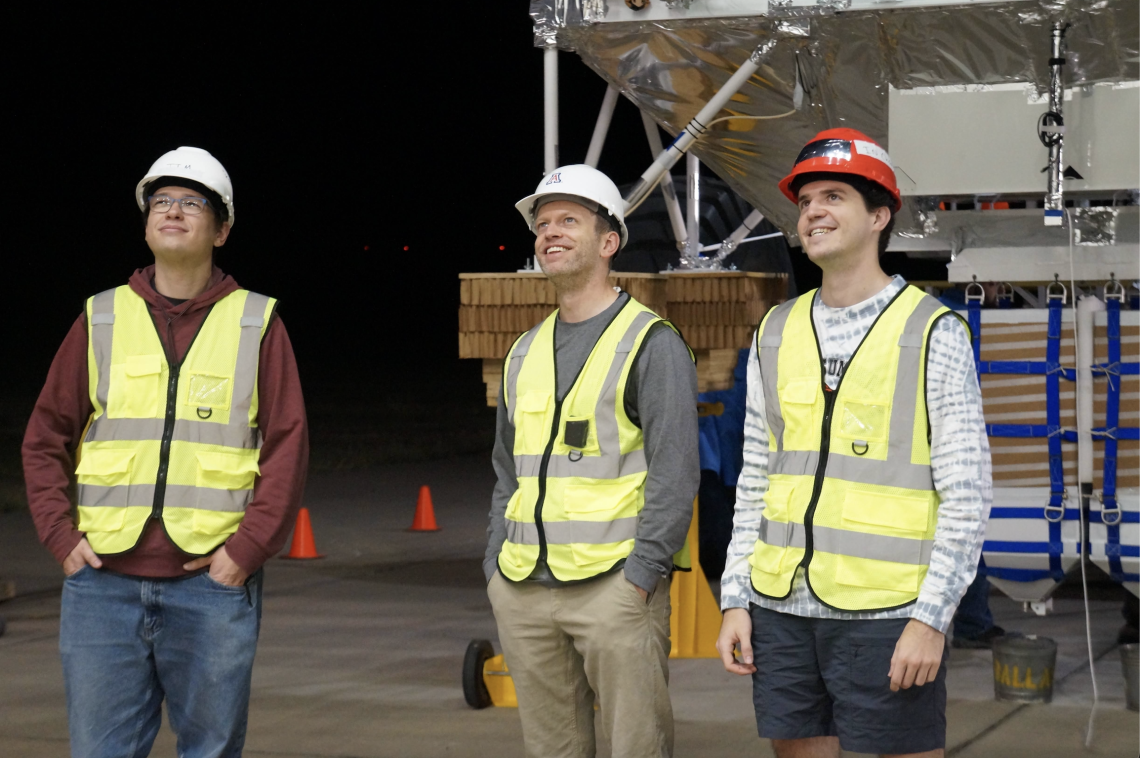
UArizona members waiting during one of nine launch attempts. Left to right: Dr. Ian Lowe, Dr. Dan Marrone, Evan Mayer. PC: Susie Zukosky (UIUC)
What if you could have the performance of a space telescope, at a fraction of the cost? That is the driving force behind the Terahertz Intensity Mapper (TIM), a NASA-sponsored mission to launch a balloon-borne far-infrared telescope into the stratosphere above Antarctica.
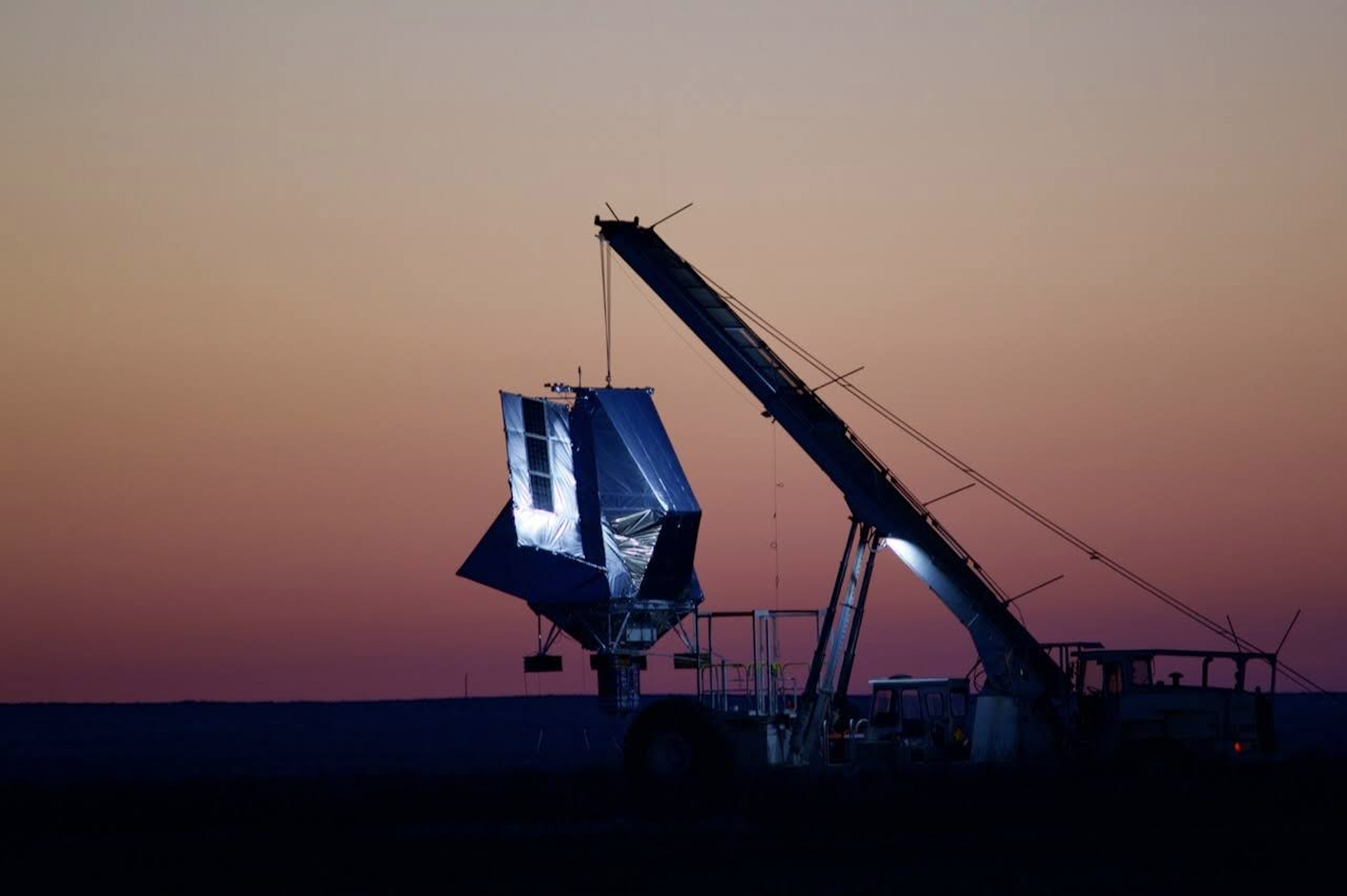
TIM on the launch pad at sunrise. PC: Joaquin Vieira (UIUC)
Scientists from Steward Observatory spent the months of August and September in Fort Sumner, NM, assembling and testing a prototype version of TIM, a balloon-borne far-infrared telescope. TIM's mission is to expand our knowledge of the star formation history of the universe, answer questions of galaxy formation and evolution, and test new detector technologies. The on-board grating spectrometer allows astronomers to create a 3D map of the intensity of ionized carbon, nitrogen, and oxygen emission over large cosmological volumes.

TIM during nighttime tests. Testing at night is critical to see how star trackers, which are the most precise sensor for pointing the gondola, are performing. PC: Evan Mayer (UArizona)
The flight in Fort Sumner is a key step to integrate with NASA's Balloon Program Office and test the team, the gondola design, attitude estimation and control systems, and telemetry on the way to TIM's Antarctic science flight (planned 2026) with the full cryogenic far-infrared camera and 2m diameter telescope.
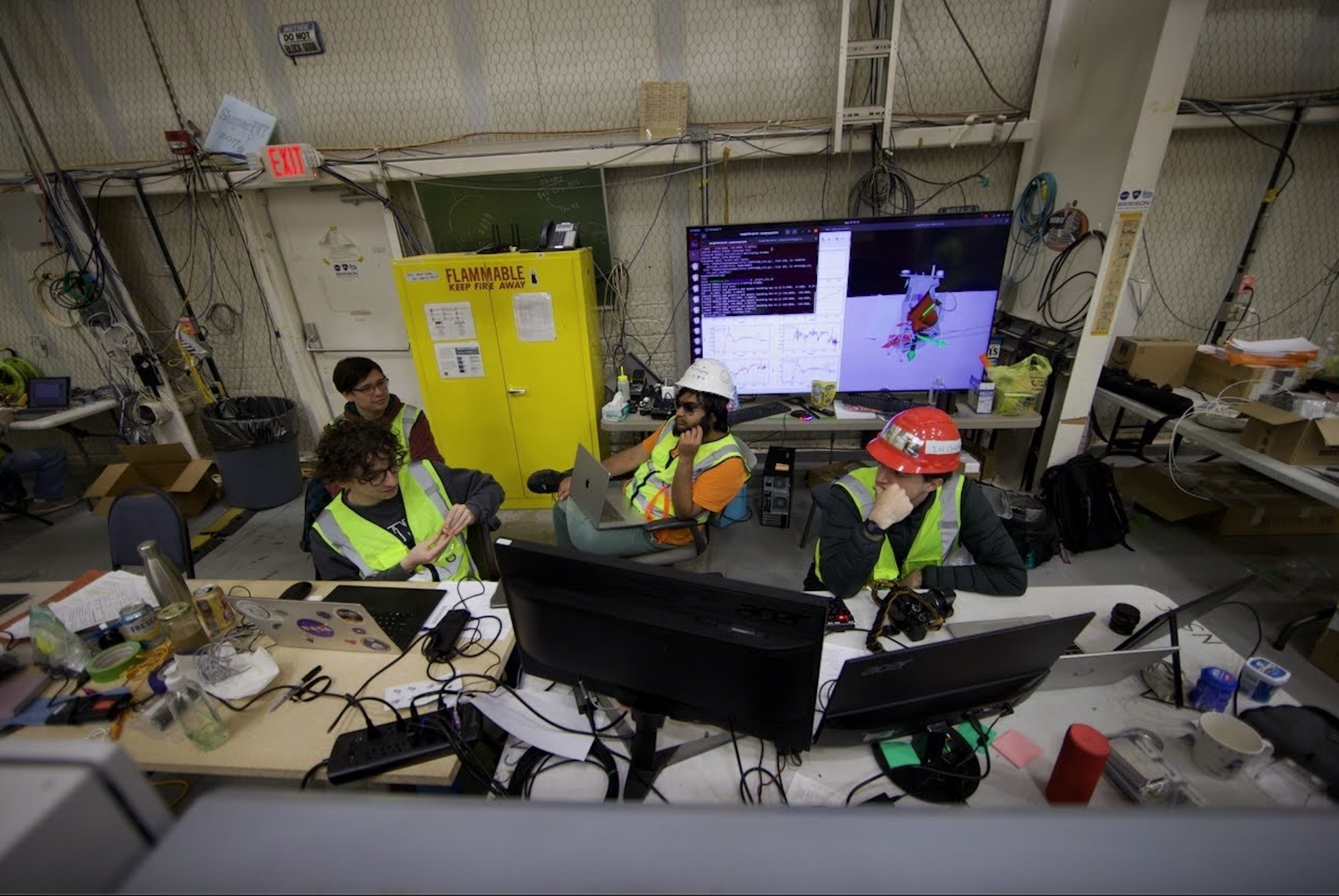
TIM flight operations crew in the command center installed in the Fort Sumner high bay. Live telemetry from the balloon is displayed on monitors around the room. Left to right: Dr. Ian Lowe (UArizona), Alexander Manduco (UPenn), Shubh Agrawal (UPenn), Evan Mayer (UArizona)
On Sept. 23, 2024, the TIM Test Flight launched at 7:27 a.m. MDT (13:27 UTC) in calm conditions. The balloon and payload reached a float altitude of 120,000 feet and flew for a total of 8 hours and 6 minutes. The test flight reported a healthy balloon and flight systems. The TIM team exercised commanding and telemetry systems, calibrated various attitude control and temperature sensors, monitored solar power, and performed scanning and pointing tests. Recovery efforts concluded that same evening with the complete recovery of the payload. TIM landed undamaged and upright in a field on the TX-NM border.
TIM is a collaboration of the University of Arizona, Arizona State University, NASA's Jet Propulsion Laboratory, the University of Pennsylvania, and the University of Illinois Urbana-Champaign.
More information:
Explore more photos of the mission and launch, below:

TIM gondola and balloon on launch pad during inflation. When the balloon is laid out and being inflated, there's no turning back! PC: Joaquin Vieira (UIUC)
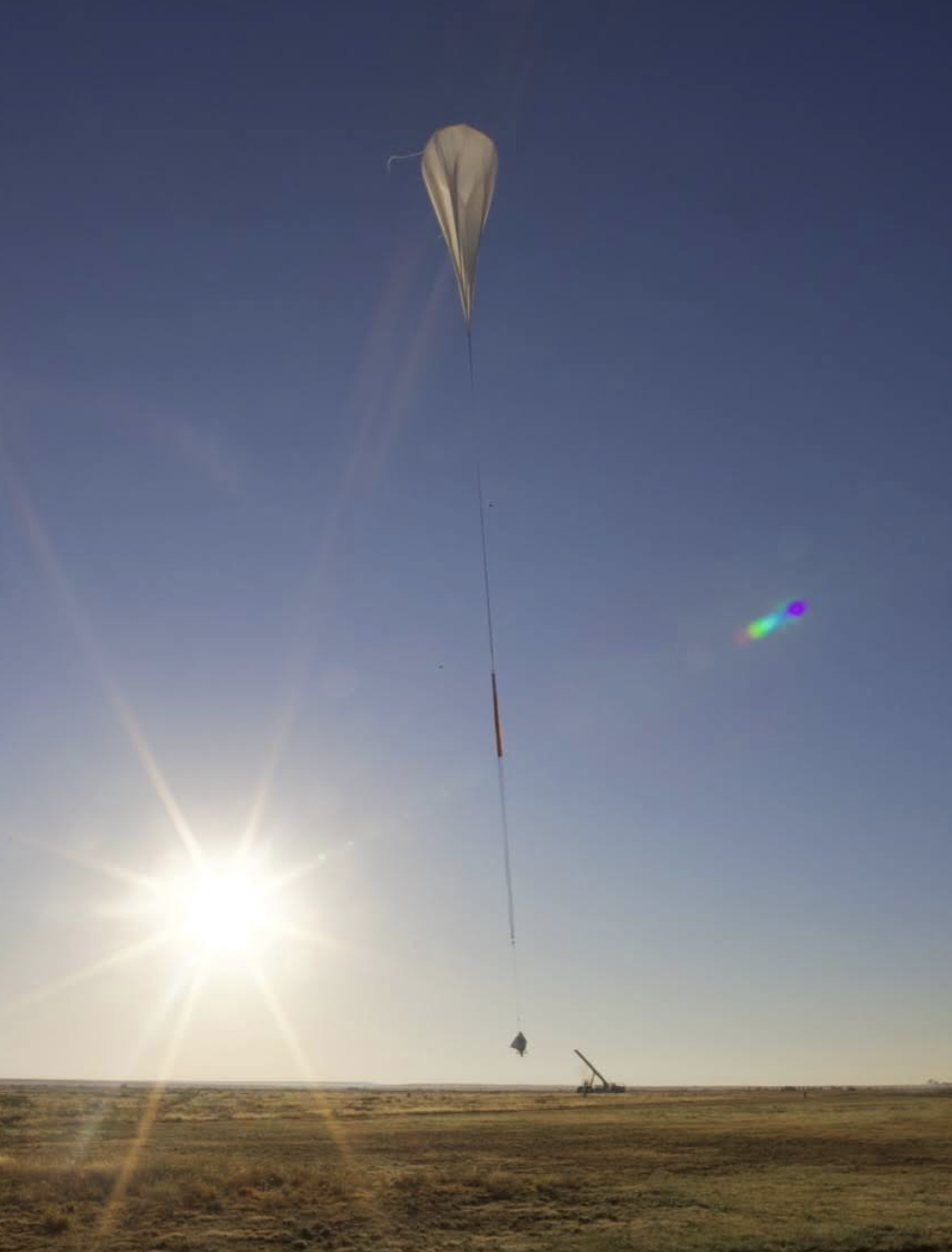
Moment of liftoff, PC: Joaquin Vieira, UIUC

TIM "at float": at an altitude of >120,000ft, the low pressures allow the balloon to expand to its full volume, over 420 ft in diameter. It can be seen from hundreds of miles away with the naked eye. This image uses a long focal length lens.

TIM landing site, PC: Brockton Brendal, UIUC
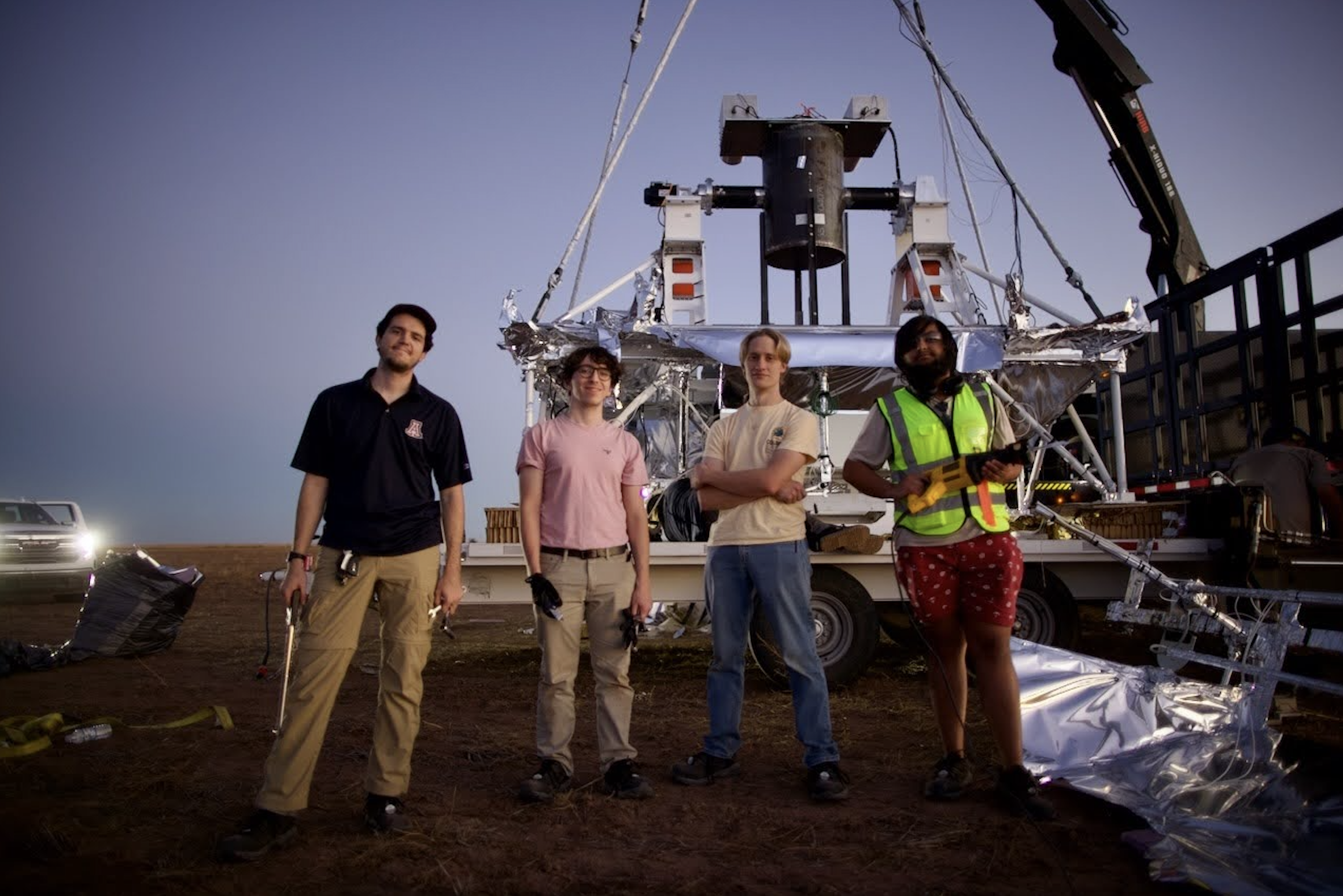
Members of the TIM recovery team. Left to right: Evan Mayer (UArizona), Alexander Manduca (UPenn), Brockton Brendal (UIUC), Shubh Agrawal (UPenn). PC: Joaquin Vieira (UIUC)
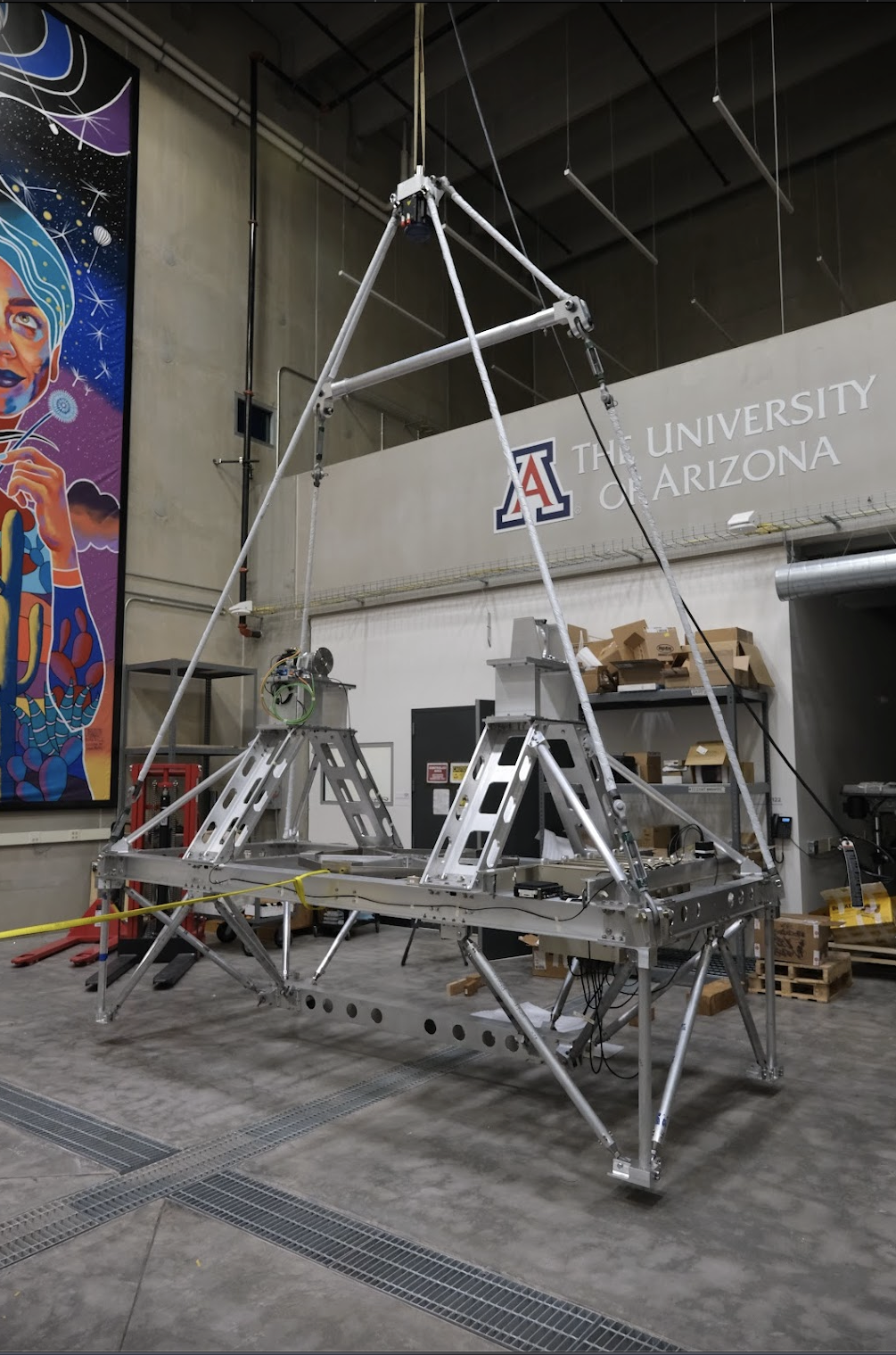
TIM gondola during integration in the University of Arizona's Mission Integration Lab at the Bridges Tech Park. PC: Evan Mayer, UArizona
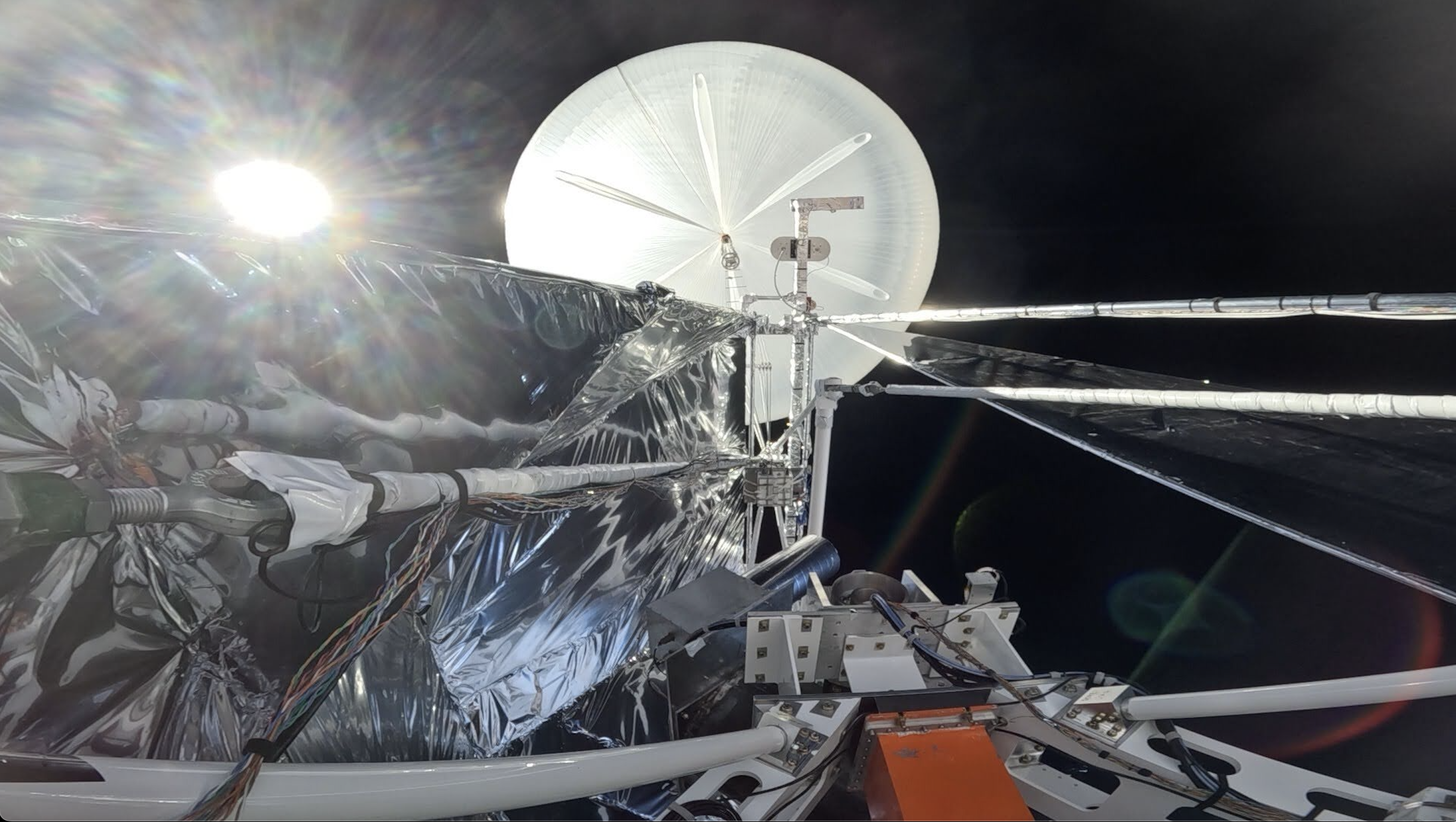
Action camera footage looking up at the suspension cables and helium balloon. TIM is at float above >99% of the atmosphere, so while the sun is out, the sky is black. PC: TIM Collaboration
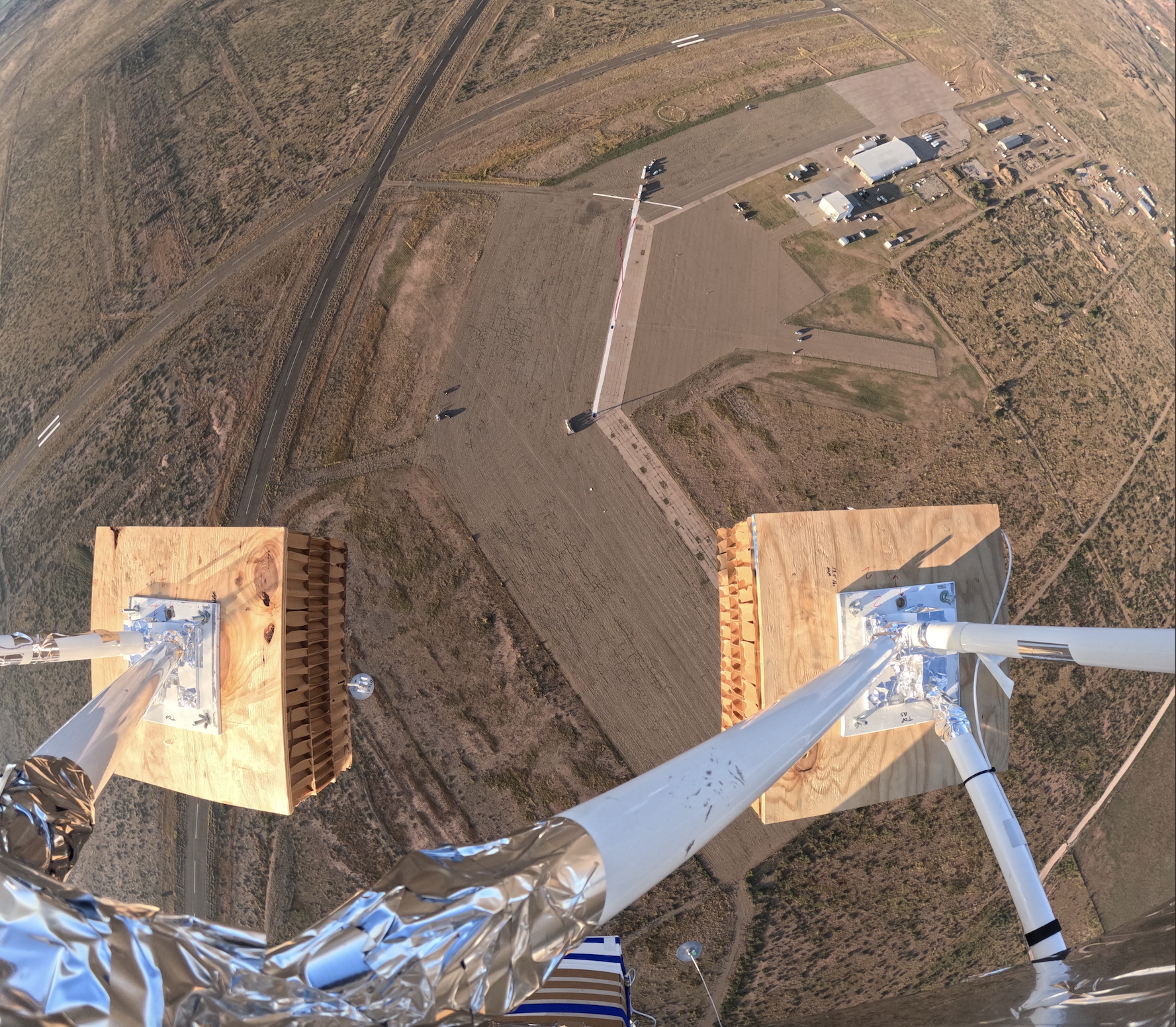
TIM lifts off from the Fort Sumner Municipal Airport. PC: TIM Collaboration
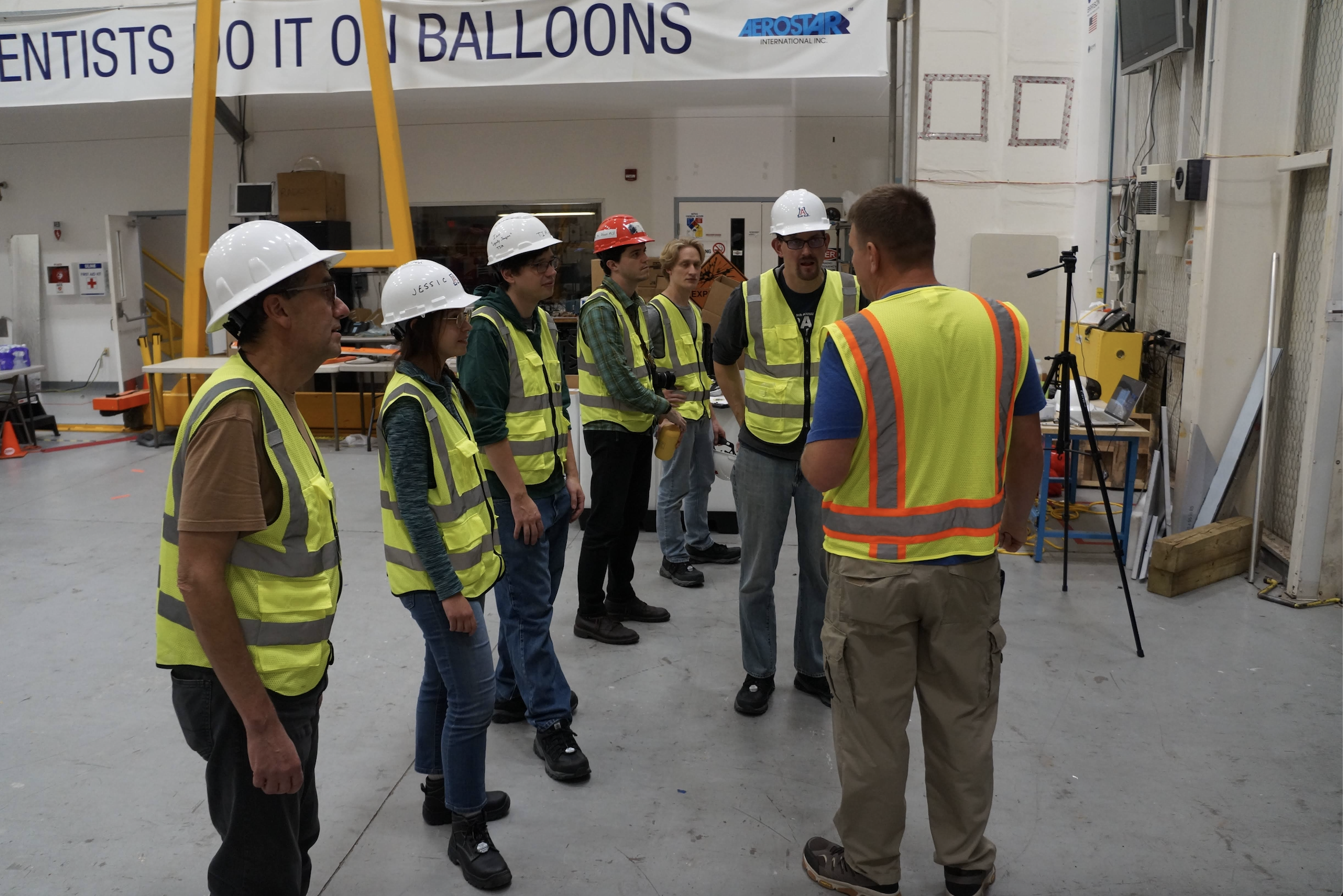
Members of the TIM flight crew waiting during an early-morning launch attempt. Left to right: Jay Alameda (UIUC), Dr. Jessica Zebrowski (UChicago), Dr. Ian Lowe (UArizona), Evan Mayer (UArizona), Brockton Brendal (UIUC), Dr. James Aguirre (UPenn). PC: Susie Zukosky (UIUC)
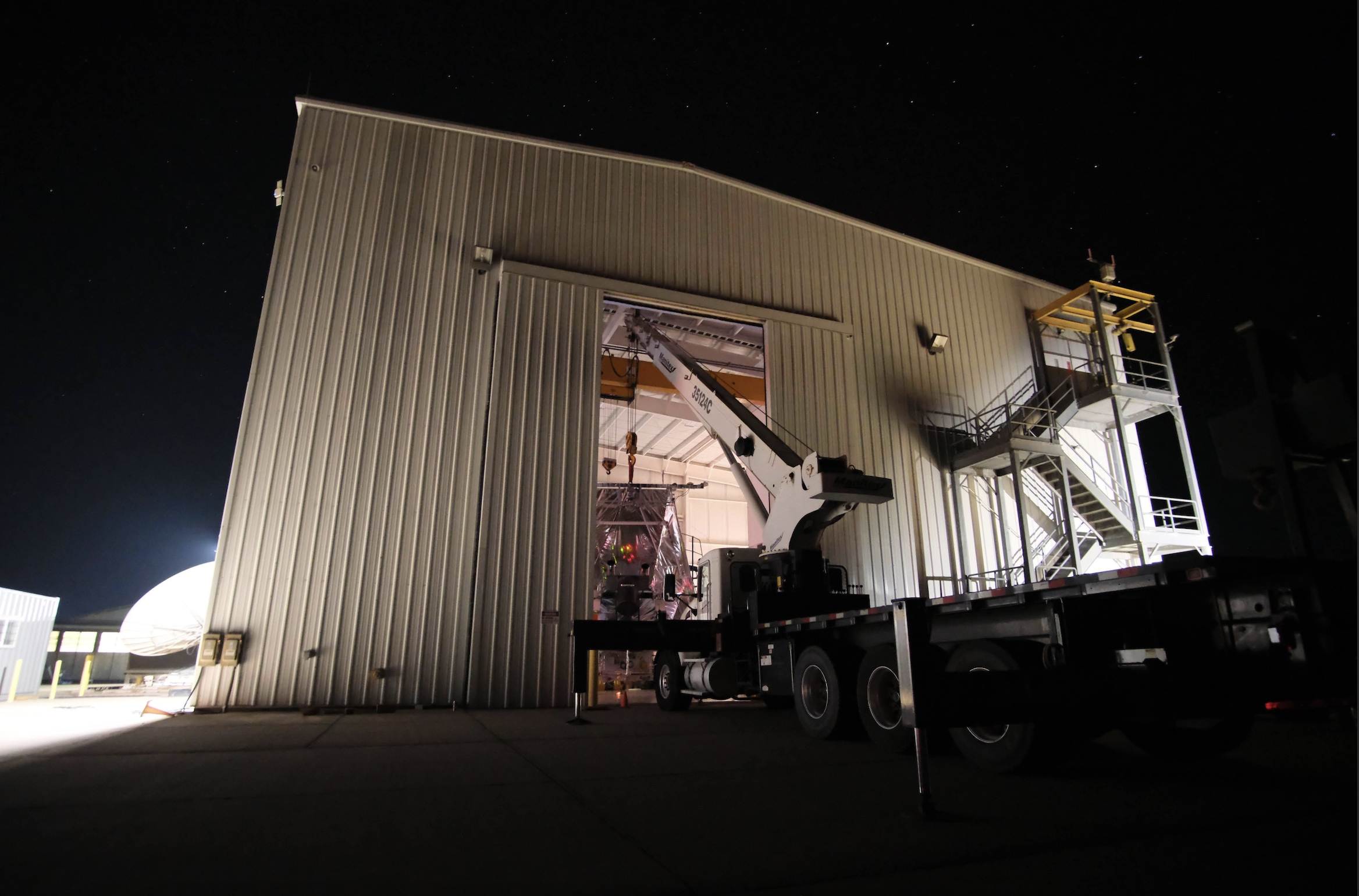
TIM during nighttime tests. PC: Evan Mayer (UArizona)

